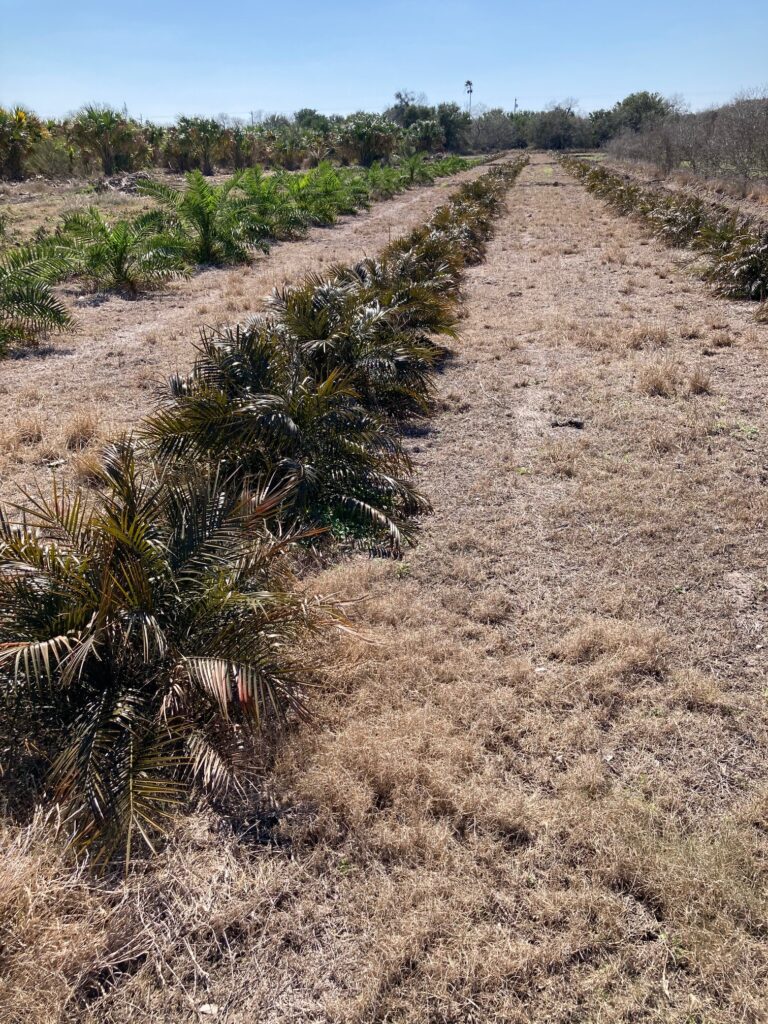
Today was our first opportunity to get out in the fields and get a good look at the damage last weeks arctic blast did to our fields. Even though the three rows pictured above are all Date palms, one is canarensis and the other two are roebellini. Clearly, roebellini is more cold sensitive. They are cold tolerant between 25 and 30 degrees. So what’s our plan? What do we do with palm trees after a hard freeze?
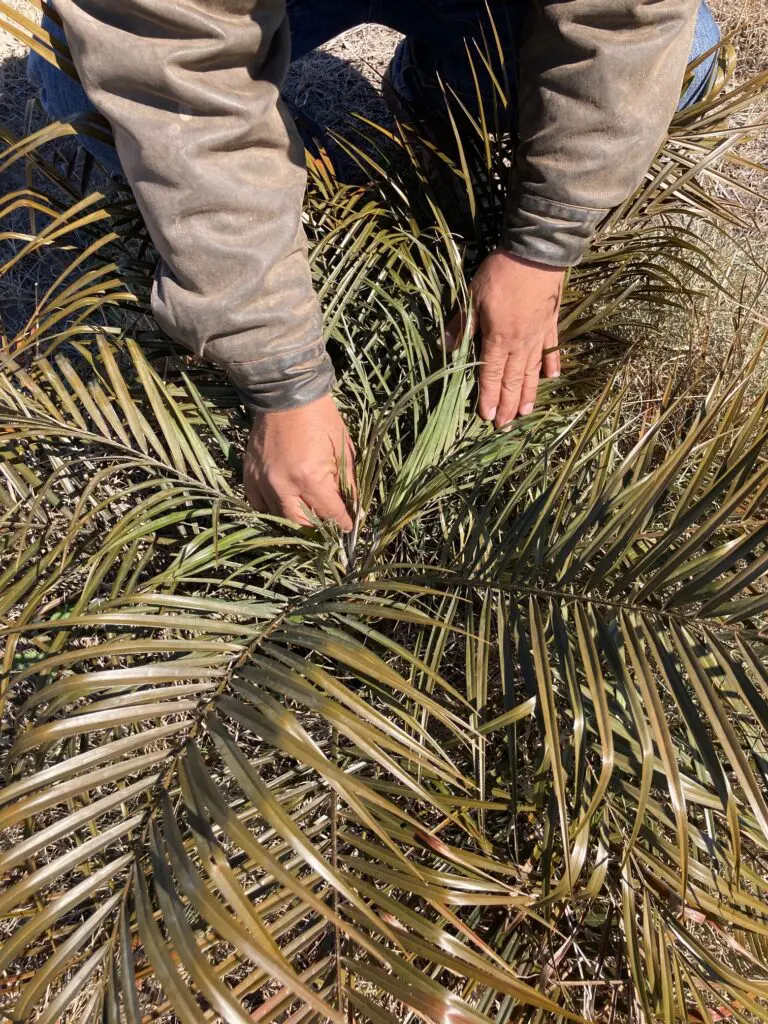
What to do for palm trees after a freeze?
To check a palms chances of survival, give the emerging spear a little tug. If it easily pulls away from the palm, you’re probably going to have to replace it. BUT don’t do anything yet! We are actually going to give all our pygmies a dose of a product that contains algaecide, fungicide, bactericide, disinfectant, and virucide. That pretty much covers it, doesn’t it! We know that at the very least we will be removing all the fronds. But not right now. Right now the fronds, even though they’re dead, are providing some insulation and protecting the heart from wind damage. When a spear emerges from a palm, the outer fronds keep it from breaking in heavy winds.
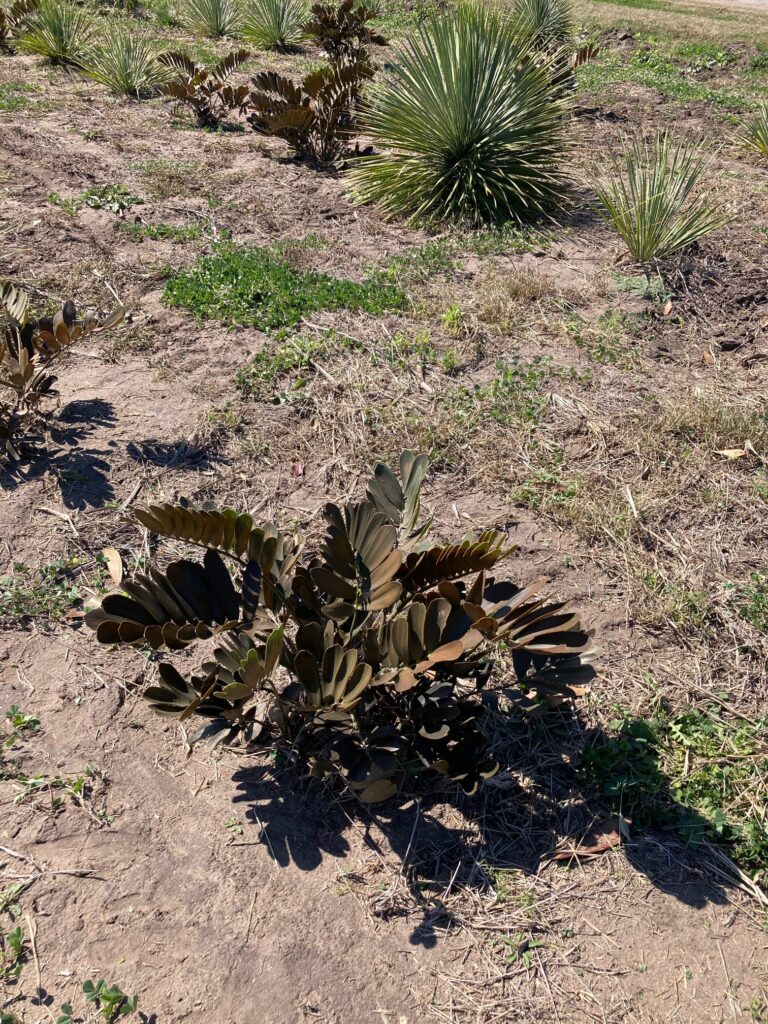
Looks Can Be Deceiving
These cardboard palms are more brown than green so we will have to remove the fronds in the spring. We expect that the warm soil temperature at the onset of our cold weather kept the roots and base of the plant warm enough that it will survive. The big question is how long will it take to grow a nice bunch of new fronds. Our guess is July.
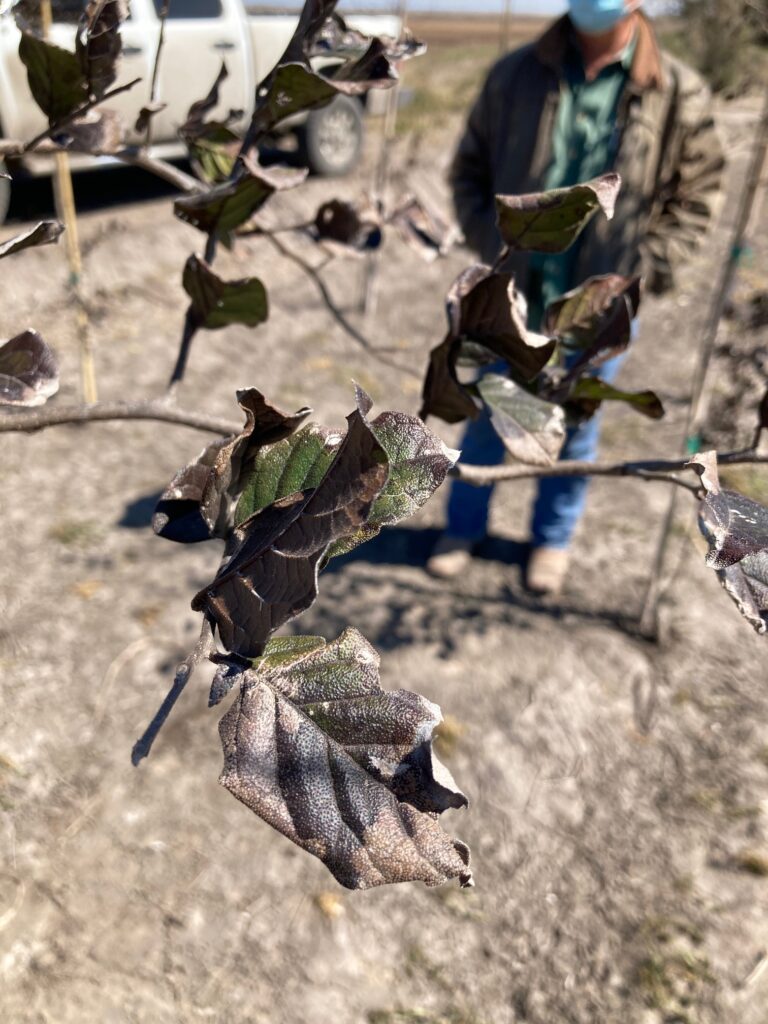
Trees may look damaged but looks can be deceiving . . .
If you have Mexican White Oak (aka Monterrey Oak) and their leaves have burned, fear not. Monterrey Oaks are deciduous (except in sub-tropical climates, like ours). Dry leaves is part of this trees growth process. In the winter, they usually drop leaves and go dormant. Our Anacua trees and wild olive trees also look like this right now. But, this is where we wait and watch. Waiting can be the hardest part. . . . but it is so important when dealing with plants that have been damaged. When spring arrives, there will be a fresh flush of leaves. In the Rio Grande Valley, we won’t have any die back on these trees, but if you are in central or north Texas you may. That’s why the waiting is so important. You want to see how much of your branches died back and only remove that part.
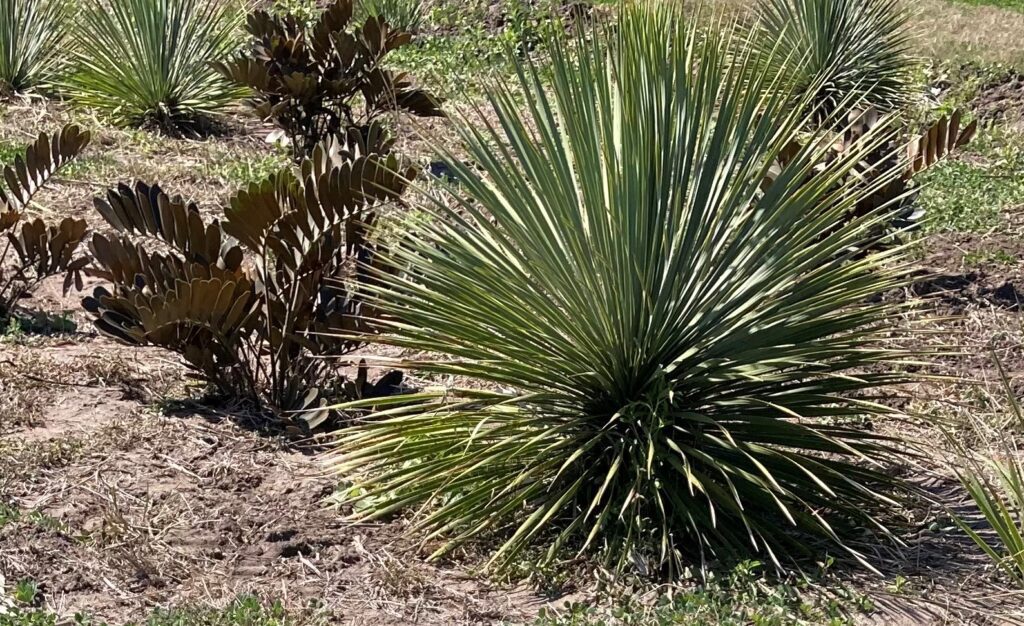
Most of our plants, like these yucca rostrata, had no damage at all. right after a big freeze, it seems like everything has died or been hurt. But there are many cold hardy palms and desert plants. Check back next week to read more about them.
